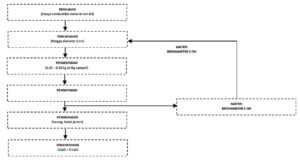RDF (Refuse Derived Fuel) Explained
“Selected waste and by-products with recoverable calorific value can be used as fuels in a cement kiln, replacing a portion of conventional fossil fuels, like coal, if they meet strict specifications. Sometimes they can only be used after pre-processing to provide ‘tailor-made’ fuels for the cement process”.
In recent years, collecting materials for recycling has become common practice in households, small businesses and large organizations worldwide. By now it is fair to say we are all aware of the issues and facts surrounding landfill, but how much do you know about the alternative methods now being used?
Not much? Well we see it as our job to change that. After all, these alternative methods play a vital role in our economy and environment – set to change the way in which we fuel our world.
RDF Defined
RDF stands for Refuse Derived Fuel. This fuel is produced from combustible components that the industry calls Municipal Solid Waste – MSW for short. This waste, usually taken from industrial or commercial sites, is shred, dried, baled and then finally burned to produce electricity. Refuse Derived Fuel is a renewable energy source that ensures waste simply isn’t thrown into a landfill and instead, put to good use.
The World Business Council for Sustainable Development explains: “Selected waste and by-products with recoverable calorific value can be used as fuels in a cement kiln, replacing a portion of conventional fossil fuels, like coal, if they meet strict specifications. Sometimes they can only be used after pre-processing to provide ‘tailor-made’ fuels for the cement process.”
RDF has many facets, meaning it can be further specified into TDF (Tyre Derived Fuels), SRF (Solid Recovered Fuels) and AF (Alternative Fuels).
The utilization of waste into fuel (Refuse Derived Fuel, RDF) is an alternative to overcome the problem of municipal solid waste (MSW). Many processes can be applied to produce RDF including through bio drying process. Bio drying is a part of Mechanical-Biological Treatment (MBT) aiming to reduce water content in the waste by utilizing heat generated from microorganism activities while degrading organic matter in the waste, thus the calorific value will increase. The paper aims to make a review from various research papers on bio drying process published in scientific journals, so it becomes one of reference on further research on bio drying process by considering the characteristics of waste in Indonesia. The review has been conducted by focusing on several important aspects on the research such as operation principle, reactor design configuration, parameters to be examined, and the characteristics of feed and product.
What Types of Materials Are Processed?
 As mentioned above, various ‘combustible components’ can be processed for RDF. Such components include non-recyclable plastics, paper cardboard, labels and generally ‘corrugative’ materials. The variety of materials able to be processed and turned into Refuse Derived Fuel means that this practice poses huge environmental benefits, as less and less fossil fuels will be required in coal fired power plants, lime plants or cement plants.
As mentioned above, various ‘combustible components’ can be processed for RDF. Such components include non-recyclable plastics, paper cardboard, labels and generally ‘corrugative’ materials. The variety of materials able to be processed and turned into Refuse Derived Fuel means that this practice poses huge environmental benefits, as less and less fossil fuels will be required in coal fired power plants, lime plants or cement plants.
What Production Steps Are Involved in RDF?
Because RDF can process such a variety of materials, there are different techniques to ensure the creation of a homogenous material that can be used as a substitute fossil fuel and act as a reduction agent in steel furnaces. The most common way of extracting RDF from Municipal Solid Waste is to combine mechanical and biological treatments methods. Such methods include, but are not limited to:
Size screening
Coarse shredding
Bag splitting
Shredding
Magnetic separation
Refining separation
Is This A Landfill Alternative?
Not only is this a viable landfill alternative, this is an eco-friendly option. And more so than you may first think.
The amount of RDF being exported has grown exponentially in recent years, in an attempt to meet landfill diversion targets. According an extensive report carried out by Dutch energy firm AEB, “exporting waste is more environmentally beneficial than land filling it in Bali / Indonesia if it travels within 2,300 kilometers by boat or 1,265 kilometers by road.”
With that in mind, it is clear that Indonesia has a responsibility to not only utilize current RDF plants but also encourage the construction and development of RDF facilities on home soil – saving the environment and improving our economy!
It’s a win-win. If you’re in, head over to our Twitter or Facebook to be kept up to date of our waste management, sustainable supply chain and renewable energy news and ideas. Indonesia’s infrastructure is forever improving and as a company we are focused on increasing opportunities for our customers to use RDF here on Bali island.
There is no universal exact classification or specification which is used for such materials. Even legislative authorities have not yet established any exact guidelines on the type and composition of alternative fuels. The first approaches towards classification or specification are to be found in Germany (Bundesgütegemeinschaft für Sekundärbrennstoffe) as well as at European level (European Recovered Fuel Organization). These approaches which are initiated primarily by the producers of alternative fuels, follow a correct approach: Only through an exactly defined standardization in the composition of such materials can both production and utilization be uniform worldwide.